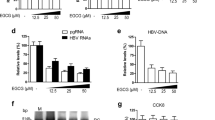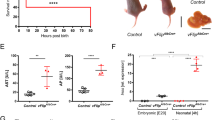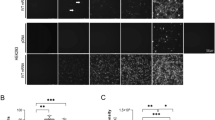Abstract
Hepatitis B virus x gene product (HBx) is known to be a transactivator of transcriptional elements that regulate the expression of a variety of genes associated with the growth, differentiation, survival and the apoptosis of cells. However, the exact mechanism of the activation and inhibition of cellular events by HBx remains uncertain. The present study was designed to measure the effect of HBx, on the signal transduction pathways associated with intracellular Ca(2+)mobilization following HBx transfection in the stable Chang liver cells (CHL-X). Enhanced cell proliferation by HBx in CHL-X was confirmed by MTT assay and by the immunodetection of PCNA. The transactivation of AP-1 by HBx induced in CHL-X was inhibited by cyclosporin A (CsA), a mitochondrial Ca(2+)channel blocker and by BAPTA-AM, a cytosolic Ca(2+)blocker. Activation of the SAPK/JNK signaling pathway by HBx was evidenced by the increased phosphorylations of c-Jun (Ser63) and of JNK (Thr183/Tyr185). Increased phospho-Erk/Erk and phospho-Raf1/Raf in HBx-induced CHL-X indicated that HBx might stimulate the MAPK pathway. PI3K activity and cytosolic free Ca(2+)levels were elevated in HBx-induced CHL-X. These results imply that HBx transactivates both JNK and MAPK signal transduction pathways in association with the mobilization of cytosolic Ca(2+).
Similar content being viewed by others
Article PDF
Author information
Authors and Affiliations
Rights and permissions
This is an Open Access article distributed under the terms of the Creative Commons Attribution Non-Commercial License (http://creativecommons.org/licenses/by-nc/3.0/) which permits unrestricted non-commercial use, distribution, and reproduction in any medium, provided the original work is properly cited.
About this article
Cite this article
Oh, J., Jeong, DL., Kim, IK. et al. Activation of calcium signaling by hepatitis B virus-X protein in liver cells. Exp Mol Med 35, 301–309 (2003). https://doi.org/10.1038/emm.2003.41
Published:
Issue Date:
DOI: https://doi.org/10.1038/emm.2003.41
Keywords
This article is cited by
-
Calcium signaling in hepatitis B virus infection and its potential as a therapeutic target
Cell Communication and Signaling (2021)
-
Viral hepatocarcinogenesis
Oncogene (2010)
-
G0/G1 arrest and apoptosis induced by SARS-CoV 3b protein in transfected cells
Virology Journal (2005)



